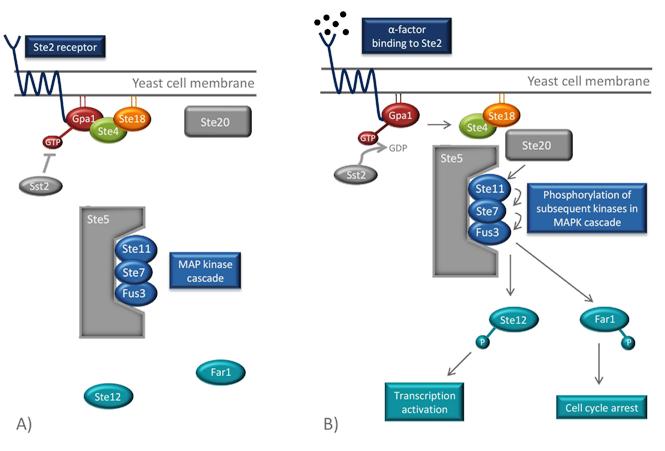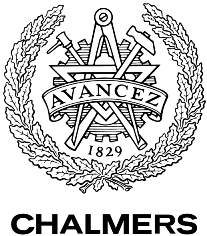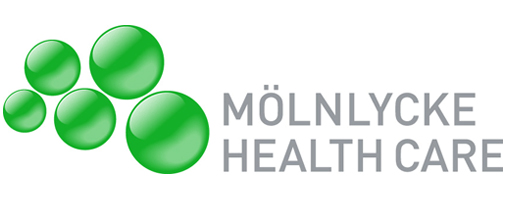Team:Chalmers-Gothenburg/Theory
From 2012.igem.org
Contents |
Introduction
In this section we present some information needed to better understand the design of our biosensor. Firstly, a short introduction to G protein-coupled receptors will be given. Thereafter, the hCG hormone, its associated LH/CG receptor and their roles during pregnancy will be discussed. The construction of our hCG biosensor will require the assembly of several biological components in yeast, such as a functional human GPCR, a modified pheromone signaling pathway, and reporter genes encoding indigo-synthesizing enzymes. Hence, in this section, we will also present some background information and previous approaches within these areas.
G protein-coupled receptors
In our biosensor we will utilize the LH/CG receptor which is a member of the family of G protein-coupled receptors (GPCRS). GPCRs are the largest class of cell-surface receptors and are used by all eukaryotic organisms, including yeast. They mediate responses to a wide variety of extracellular signals such as smell, taste, light, neurotransmitters and hormones [1] and they control important functions like heart rate and blood pressure. GPCRs are also the most common target for medicinal drugs today and nearly 30 % of all pharmaceuticals function by acting as modulators of GPCRs [2].
Structure
All GPCRs are made up of a single peptide with a cytosolic region, a ligand-binding extracellular region and seven transmembrane domains. The transmembrane domains are connected via three intracellular and three extracellular loops. Common for all GPCRs is also that they mediate responses to extracellular signals by interacting and activating a trimeric GTP-binding protein (G protein). This G protein is generally attached to the cytosolic part of the cell membrane but can also be associated with the receptor itself. All G proteins have a similar structure and consist of three subunits called α, β and γ. These are in turn divided into several subclasses. For instance, there are more than 15 identified Gα subunits, which are sorted into four main classes: Gαi/o, Gαs, Gαq and Gα12 [3].
Signal transduction
The activation of the G protein is achieved by a conformational change of the receptor after binding of a signal molecule to the ligand binding site. This change causes the α subunit to release its bound GDP and to exchange it for GTP. This in turn leads to a conformational change of the G protein itself, which is thereby activated. At this stage the subunits of the G protein can either dissociate or remain associated. In either case, the activated G protein then interacts with a target protein in the cell membrane, which relays the signal [1]. The figure below shows a schematic illustration of a G protein-coupled receptor and its interacting G protein.
Schematic illustrations of a G protein-coupled receptor (GPCR). The GPCR consists of a cytosolic region, a ligand-binding extracellular region and seven transmembrane domains. The receptor is associated with a trimeric GTP-binding protein (G protein) consisting of three subunits called α, β and γ. (A) When no signal molecule is present, the G protein binds to GDP and is inactive. (B) Upon binding of a signal protein to the ligand-binding site, a conformational change of the receptor occurs. This enables the receptor to interact with the α subunit of the associated G protein, which then exchanges its bound GDP to GTP. This activates the G protein and causes the βγ subunit to dissociate, thus enabling it to relay the signal by regulating the activity of additional intracellular signaling proteins. Figure is adapted from [1].
Human chorionic gonadotropin hormone
The hormone of interest when detecting pregnancy is human chorionic gonadotropin (hCG), which is a hormone that belongs to the family of glycoproteins [4]. During pregnancy, hCG will bind to the luteinizing hormone receptor (LH/CG receptor) that is localized on the yellow body and ensure the yellow body to maintains its progesterone production. This maintained level of progesterone stops menstrual bleeding and prepares the uterus lining for the implementation of the fertilized egg [5], [6].
All glycoprotein hormones share a common α subunit, but they also consist of a receptor-specifc β subunit. The hCG hormone is made up of an α and a β subunit that consist of 92 respectively 145 amino acid residues [7]. The term hCG actually refers to five independent molecules, all with various structure and biological function. The two dominating forms are regular hCG and hyperglycosylated hCG (H-hCG) but only regular hCG acts on the LH/CG receptor. Therefore our biosensor will only be able to detect regular hCG [7].
Luteinizing hormone receptor
The LH/CG receptor belongs to the family of G proteins-coupled receptors characterized by an extracellular domain, seven transmembrane domains and coupling to a G protein [4]. Several studies has investigated the hCG and LH/CG receptor interactons and it has showed that parts all over the receptor is important for ligand binding and signal transduction [5]. The extracellular domains of the LH/CG receptor also contains six potential sites for glycosylation and some of the glycosylation sites may affect the intracellular transport, membrane insertion or recycling of the receptor [6].
Yeast pheromone pathway
S.cerevisiae stably exists as either a haploid or a diploid. In both modes of existence, it reproduces asexually through a process called budding. This is an asymmetrical dividing process in which a mother cell gives rise to a smaller daughter cell [7]. Diploid yeast cells are stable but under stress conditions such as absence of nutrition, they can form haploid spores. In the haploid mode, yeast has two mating types, a and α called MATa and MATα respectively. The haploid yeast cells are capable to mate with the opposite mating type which results in the formation of a diploid zygote [8].
Mating between haploid cells is mediated by diffusible molecules called pheromones. The mating types secrete different pheromones (a- and α-factors) and respond to the mating factor of the opposite mating type. The response occurs when the pheromones bind to a G protein-coupled receptor in the yeast cell membrane. The two mating types have different GPCRs (Ste2 and Ste3) each binding to the corresponding pheromone. The pheromones activate the GPCR which in turn creates an intracellular response. This intracellular signal transduction pathway in yeast is one the best understood signaling pathways in eukaryotes [9] and will also be utilized in the hCG biosensor. The whole pathway is illustrated in the Figure below.
Signal transduction
The GPCR of the MATa mating type is Ste2. Its associated G protein at the inside of the cell membrane consists of three subunits, Gpa1, Ste4 and Ste18, which correspond to mammalian Gα, Gβ and Gγ [9]. When α-factors from the MATα cell bind to the Ste2 receptor of the MATa-cell, a conformational change of the GPCR occurs. This activates the α subunit of the G protein, the Gpa1, by exchanging its bound GDP for GTP. This leads to the dissociation of the Ste4-Ste18 complex, which in turn binds the effector proteins Ste5 and Ste20, through Ste4. Ste20 is a protein kinase and Ste5 is a scaffold protein that binds and organizes different kinases of the mitogen-activated protein kinase (MAPK) cascade. When the Ste4-Ste18 complex binds to both Ste5 and Ste20, the two proteins are moved towards each other. This enables Ste20 to phosphorylate the first kinase in the MAPK cascade, Ste11, which is bound to Ste5. Consequently, subsequent kinases (Ste7 and Fus3) of the cascade are phosphorylated, which ultimately results in the phosphorylation and activation Far1 and Ste12 [9].

Indigo
Bio-indigo can be synthesized from the amino acid tryptophan in a few simple steps, which are outlined in the picture below. The first reaction is the conversion of tryptophan to indole, catalyzed by tryptophanase. The next part of the pathway is catalyzed by a mono- or dioxygenase and transforms indole to indoxyl. Indoxyl is then converted to indigo by several spontaneous reactions in the presence of oxygen [10], [11]. In order to produce bio-indigo in S. cerevisiae, genes encoding tryptophanase and a flavin-containing monooxygenase are inserted.
References
[1] Alberts B, Johnson A, Lewis J, Ra M, Roberts K, Walter P. Molecular Biology of the Cell. 5th ed. New York: Garland Science; 2008. [2] Ishii J, Fukada N, Tanaka T, Ogino C, Kondo A. Protein{protein interactions and selection: yeast-based approaches that exploit guanine nucleotide-binding protein signaling. Federation of European Biochemical Societies Journal. 2010;277(9):1982-95. [3] Brown AJ, Dyos SL, Whiteway MS, White JHM, Watson MAEA, Marzioch M, et al. Functionalcoupling of mammalian receptors to the yeast mating pathway using novel yeast/mammalian G protein α-subunit chimeras. Yeast. 2000;16(1):11-22.
[http://search.proquest.com/docview/207445721] Randeva HS, Jackson A, Karteris E, Hillhouse EW. hCG production and activity during pregnancy. Fetal and Maternal Medicine Review. 2001;12(3):191-208. [http://www.sciencedirect.com/science/article/pii/S1569258298800962] Racowsky C, Gelety TJ. The Biology of the ovary. In: Bittar EE, Bittar NE, editors. Reproductive Endocrinology and Biology vol.12. Madison; 1998. p. 77-102. [6] Cole LA. Biological functions of hCG and hCG-related molecules. Reproductive biology and endocrinology. 2010;8(1):102-116. [http://www.sciencedirect.com/science/article/pii/S0009898111005456] Cole LA. hCG, Five independent molecules. Clinica chimica acta; international journal of clinical chemistry. 2012;411(1-2):48-65. [http://ac.els-cdn.com/S0020729298800015/1-s2.0-S0020729298800015-main.pdf?_tid=505e93f11a37adb80e9e59d45413eb17&acdnat=1341401833_c0dd0020052557a52938e26009a15ae7] Ryu KS, Gilchrist RL, Koo YB, Ji I, Ji TH. Gene, interaction, signal generation, signal divergence and signal transduction of the LH/CG recptor. International Journal of Gynecology & Obsterics. 1998;60(1):9-20. [http://ac.els-cdn.com/S0303720796039512/1-s2.0-S0303720796039512-main.pdf?_tid=0ab27504e0538f9a7a9e6499521650aa&acdnat=1341401895_4471445a987273c768f2d408869bd03d] Ryu KS, Ji L, Chang L, Ji TH. Molecular mechanism of LH/CG-receptor activation. Molecular and Cellular Endocrinology. 1996;125(1-2):93-100. [http://www.ncbi.nlm.nih.gov/pmc/articles/PMC1134190/pdf/biochemj00109-0219.pdf] Petäja-Repo UE, Merz WE, Rajaniemi HJ. Significance of the carbohydrate moiety of the rat ovarian luteinizing hormone/chorionic-gonadotropin receptor for ligand-binding specificity and signal transduction. The Biochemical Journal. 1993;292(3):839-844. [http://books.google.se/books?id=MuHG-_dkhLQC&pg=PA33&hl=sv&source=gbs_toc_r&cad=4#v=onepage&q&f=false] Feldmann H. Cellular Dynamics. In: Dr Koutsouki E, Dr Sendtko A, editors. Yeast molecular biology: a short compendium on basic features and novel aspects. Weinheim: Wiley-Balckwell; 2010. p. 33-82. [http://ac.els-cdn.com/S0196978104004486/1-s2.0-S0196978104004486-main.pdf?_tid=d8068d3f84f146effffac6cd6868c35d&acdnat=1341402231_d88ea9fd1dd1cda3d48888094307f3fc] Bardwell L. A walk-through of the yeast mating pheromone response pathway. Peptides.2004;25(9):1465-1476. [http://onlinelibrary.wiley.com.proxy.lib.chalmers.se/doi/10.1111/j.1742-4658.2010.07625.x/pdf] Ishii J, Fukada N, Tanaka T, Ogino C, Kondo A. Protein-protein interactions and selection: yeast-based approaches that exploit guanine nucleotide-binding protein signaling. Federation of European Biochemical Societies Journal. 2010;277(9):1982-95. [http://ac.els-cdn.com/S0141022908000598/1-s2.0-S0141022908000598-main.pdf?_tid=4b2789324aefcec99a5983423600f171&acdnat=1341405624_045cdf6deefbf57c63f259595efa9d77] Han GH, Shin HJ, Kim SW. Optimization of bio-indigoproduction by recombinant E. coli harboring fmo gene. Enzyme and Microbial Technology. 2008;42(7):617-623. [http://www.springerlink.com.proxy.lib.chalmers.se/content/p4wyja04ny676nyt/fulltext.pdf] Berry A, Dodge TC, Pepsin M, Weyle W. Application of metabolic engineering to improve both the production and use of biotech indigo. Journal of Industrial Microbiology & Biotechnolog.2002;28(3):127-133. "
"




